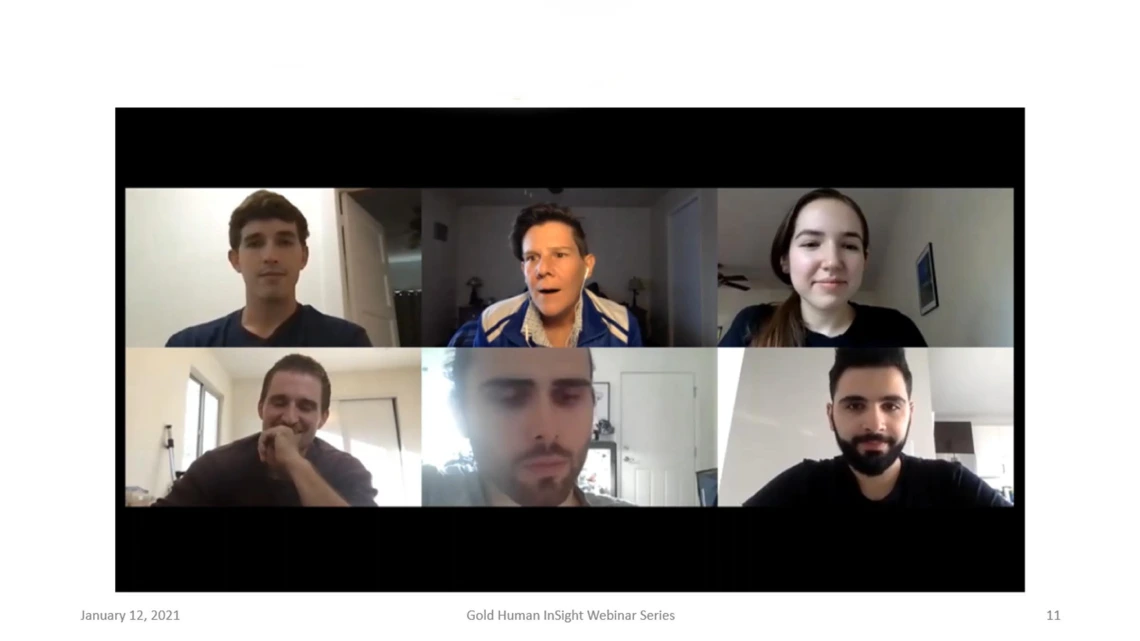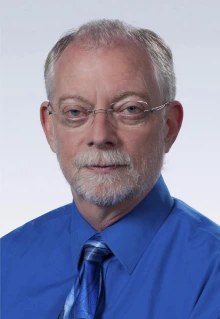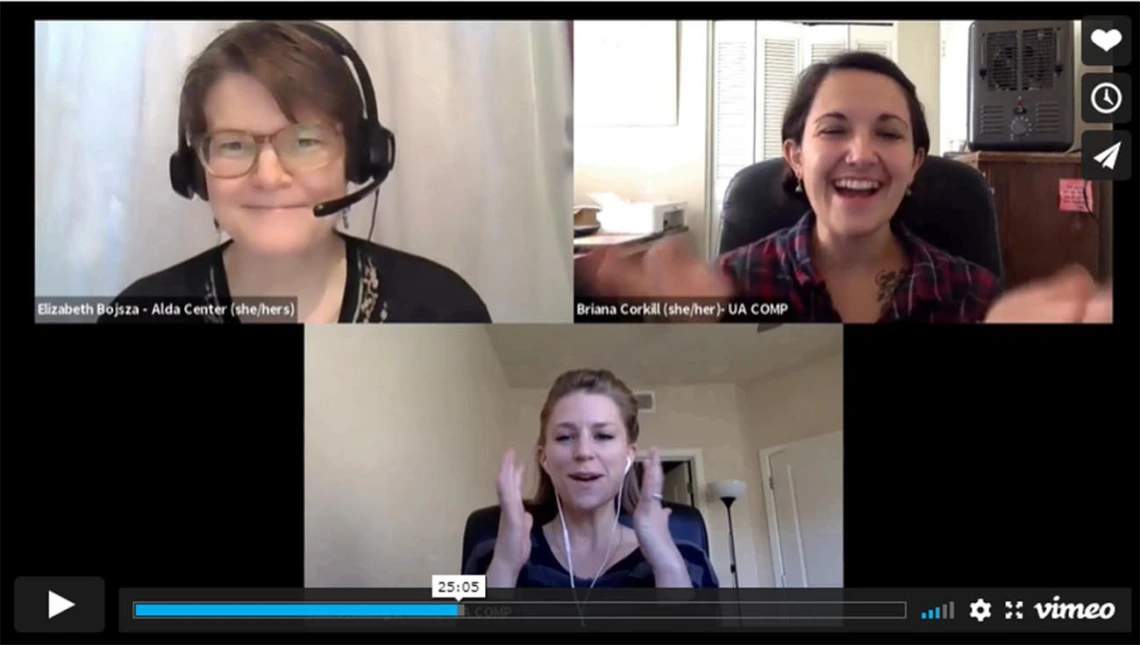How the Art of Improv Can Teach Humanistic Care
Students at the College of Medicine – Phoenix learn how listening and reacting to a partner on stage applies to the doctor-patient relationship.

First-year College of Medicine – Phoenix students participated in small group improv sessions during their orientation in October. This training can prepare future practitioners to listen and respond to patients to forge meaningful relationships with them.
All it took was a couple of acting classes to convince Howard Silverman, MD, that the art of improv could seamlessly be applied to medical education to help train humanistic, responsive doctors.
Though the concept sounds straightforward, it seemed daunting to implement the idea in the midst of a pandemic. Dr. Silverman, a family medicine doctor passionate about teaching the next generation of practitioners, pressed forward.
Because he did, all 100 first-year medical students at the College of Medicine – Phoenix were exposed to lessons of improv during their October Clinical Continuity Experience orientation as a practice of humanistic care.
Dr. Silverman retired from the college in 2017, but he maintains a role as a professor in the departments of Biomedical Informatics, Family and Community Medicine, and Bioethics and Medical Humanism.
Where it all began

Howard Silverman, MD
He decided to try a drop-in class for a few hours on Saturdays at a theatre in the Phoenix area.
“It made me very, very nervous to get up on stage,” he said, despite his love for watching improv. “I’m always a back-of-the-room guy. Even in the College of Medicine, I had an associate dean role, but I didn’t have a need to be highly visible. What they knew is the work got done. Being in front, on stage, was a new experience.”
After a few sessions of improv were under his belt, he said, it clicked for him.
“I thought to myself ‘These skills are really important to teach the students, this is what I’ve been doing in exam rooms for 40 years,’” he said.
The art of humanistic patient care
Dr. Silverman said that light-bulb moment came as he learned the simple tenets of improv. First, there’s the concept of “yes, and...”
“Whatever your partner gives you, you build on it,” he said.
The second tenet is always make your teammates look good; always help the team succeed.
“And the third is really focusing on the awareness of what's going on with the other – either the other person that you’re working with, or within the team you’re working with – so you’re externally focused, paying attention and are responsive,” Dr. Silverman said. “Well, all of that is like good patient care.”
Doctors are pressed for time, and they have to form relationships quickly while focusing on the medical task at hand.
“The idea is to get that to happen earlier in the visit by opening up, by letting them know you’re on their side, you’re with them, by using what they’re telling you, helping to build the collaboration, maybe even having a little fun,” he said.

Two College of Medicine – Phoenix students react as they do an improv skit via Zoom for a webinar hosted by the Alda Center for Communicating Science and the Gold Foundation.
Turning improv into a course for medical students
It wasn’t difficult for Dr. Silverman to suggest to his colleagues that a course in improv could pay dividends for medical students. He decided to work with others to design an elective course, offered to medical students during the summer between their first and second years as a Personalized Active Learning option.
“These skills are really important to teach the students, this is what I’ve been doing in exam rooms for 40 years.”Howard Silverman, MD
This planning was just getting underway in March 2020. Then COVID-19 began to sweep the globe, and all courses had to go virtual. At first glance, it seemed the concept was doomed; however, Dr. Silverman didn’t give up.
He first thought of creating a course that heavily relied on a book club model, reading and discussing Alan Alda’s book “If I Understood You, Would I Have This Look On My Face? My Adventures in the Art and Science of Relating and Communicating.”. But, he said, that approach was going to be “as boring as watching paint dry.” Then he started thinking differently about how to teach improv on Zoom.
“I could throw you a ball, and you can catch the ball,” Dr. Silverman said. “There are a variety of improv games that we can play through Zoom pretty well, and some of them are actually even better, because you have a better fix on the person’s face. So, before we ran the course, we started migrating more and more of the discussion out, and more and more of the improv in.”
Proof of concept, improv in action
Eight students signed up for the summer elective, and they gave it rave reviews. In no time, the college decided it really did need to be a mandatory part of the first-year Clinical Continuity Experience orientation.
For this course, Dr. Silverman began designing a different virtual improv session, two hours long with 50 students, and repeated again for the other half of the Class of 2024 the same day. They utilized Zoom rooms for small group work, hired experienced improv instructors to lead the rooms and watched what happened.
“We were acutely aware that these students had never met each other face to face,” because of the pandemic virtual learning environment.
“The relationships are formed in the hallways and in the anatomy labs and all those connections normally happen in a group of students,” Dr. Silverman said. After their virtual improv course, “several students said they felt so much closer to their peers because they were all paying attention to each other, and they were listening generously to what each person was offering.”
“It was a great experience gaining that trust with our other classmates and learning that you can have these experiences with people you don’t know, and it’s OK,” said second-year student Ann Staudinger Knoll.
Staudinger Knoll and second-year peer Briana Corkill were among the eight who completed the summer elective course. In January, they participated in a one-hour webinar Dr. Silverman led on clinical improv with the College of Medicine – Phoenix, the Arnold P. Gold Foundation and the Alan Alda Center for Communicating Science.
“I think it was very enlightening to get comfortable being uncomfortable. Our entire medical school education is essentially learning how to interact with patients and attending (physicians) and parents of kids who might bring their child to the emergency department, where it can be very awkward and uncomfortable,” Corkill said. “I think that learning how to adjust and say ‘yes, and…’ and go with the flow is going to be so good for any specialty that we go into. You have to learn how to pivot, and this is going to be a really good skill to have.”
Supplementing communication curriculum

Medical students practice interacting with patients during their education.
Medical students already participate in mandatory courses in their first and second years to learn how to interact with patients, and gain practice doing so.
“I think this is complementary to what the students are already being taught,” Dr. Silverman said.
Existing communication courses help students prepare for when a patient shows emotion, for example. Adding in an element of improv acting, with its practiced attention to the other person’s reactions, responses and emotions, builds on those required courses.
“It affords them some ability to be more of who they are, be creative in their communication style, while still getting the information we need as doctors,” he said.

